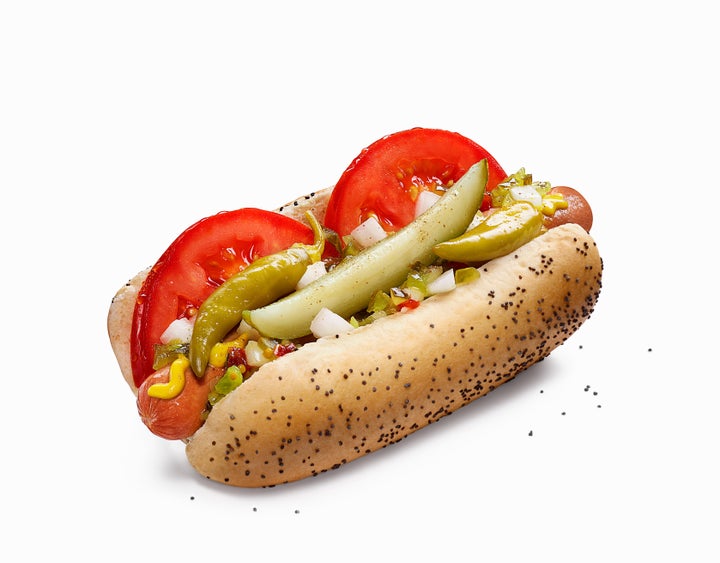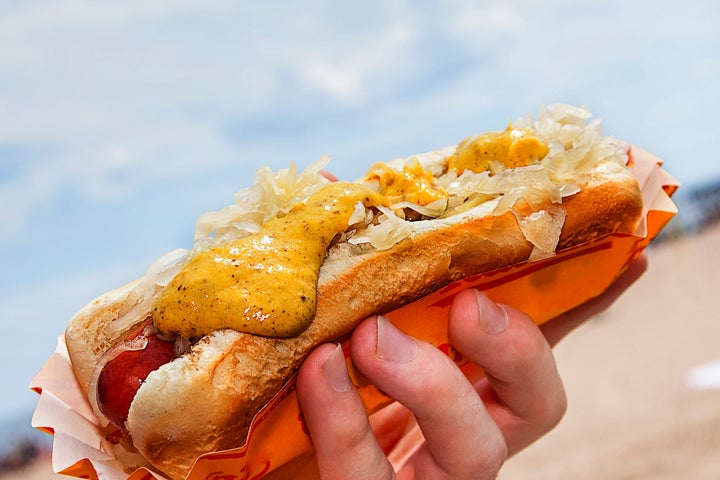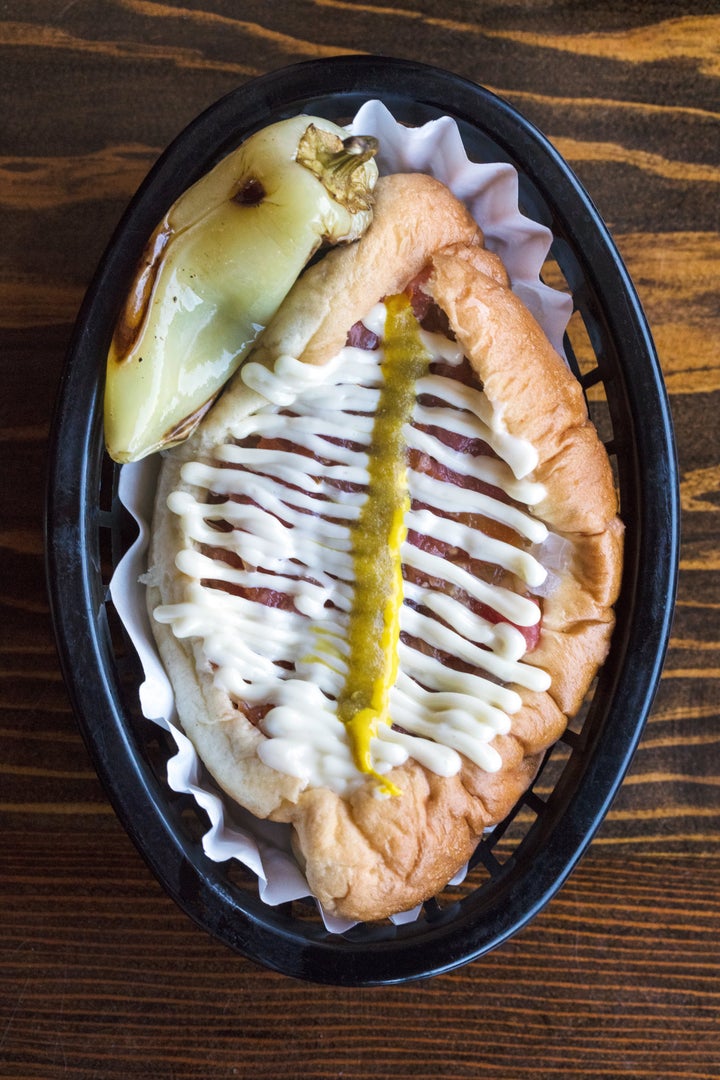The regional Hot dog styles of America, from New York to Seattle.Chicago, New York, Seattle… these are just a few of the cities associated with extremely specific hot dog toppings.
An unquestionable symbol of culinary Americana, the hot dog appears on menus, in grocery stores and at concession stands all over the country, and its enduring popularity is at least partially due to its blank-slate potential. “When you start with a hot dog and a bun, you have a culinary canvas that allows you to create anything. Sauces, cheeses, shredded vegetables, relishes — a hot dog can accommodate all of those toppings,” explained Adam Beane, the brand director at Hebrew National.
Because the hot dog can be customized so easily and so thoroughly, it’s a prime dish for region-specific variations, with chefs from different cities and states using their area’s favorite ingredients and flavors to develop specialty dogs that reflect their place of origin. “Each combination reflects the region where it was created, so a hot dog really allows you to travel the country in a way few foods can,” Beane said.
Here, we’re breaking down eight of the most popular regional hot dog styles in the United States, including where they’re from, how they’re dressed and why they’re so beloved by locals and visitors alike.
Chicago Dog

What it is: The Chicago Dog is an all-beef frank (usually steamed, but occasionally grilled) served in a poppy-seed hot dog bun and topped with yellow mustard, sweet pickle relish, chopped white onions, tomato slices, pickled peppers, a dill pickle spear and a light dusting of celery salt.
Where it’s from: According to Dennis McKinley, the owner and operator of The Original Hot Dog Factory in Atlanta and a self-proclaimed hot dog scholar with an encyclopedic knowledge of hot dog styles from around the nation, the Chicago Dog originated in (where else?) Chicago “during the Great Depression, when a greengrocer converted his vegetable cart into a hot dog stand, and began offering the ‘Depression Sandwich,’ which sold for a nickel.” He continued: “This was a [hot] dog made with mustard, onions, plain relish and sport peppers. This became an instant hit, and word quickly spread.”
Why it’s iconic: The Chicago Dog has a devoted fanbase and is arguably the most celebrated regional hot dog style in the United States, with The New York Times going so far as to declare Chicago “Hot Dog Town, U.S.A.” The crunchy and abundant vegetables counteract the hot dog’s saltiness, and the tang from the pickles, relish and mustard plays well off the sweetness of the tomatoes, the sharp zing of the onions and the herbaceous celery salt.
New York Dog

What it is: A New York hot dog is an all-beef frank that’s typically boiled, placed in a soft white hot dog bun, and topped with “sauerkraut and brown mustard,” Beane said. For a truly authentic NYC-style hot dog experience, take the time to steam the hot dog bun before adding the boiled frank.
Where it’s from: The Big Apple, of course. New York City is famous for its plethora of sidewalk hot dog vendors, and while some naysayers scoff at the “dirty water dogs” sold at these spots, they’re missing out on a classic piece of New York culinary tradition.
Why it’s iconic: The New York hot dog is a beautiful homage to the blend of cultures and flavors associated with the nation’s biggest city. The spicy brown mustard and sauerkraut are a nod to NYC’s rich relationship with German, Jewish and Eastern European cuisines. “Sausages have long been a part of various European cuisines, and hot dogs were very popular with immigrant communities in New York in the late 19th and early 20th century. German immigrants were among the first to sell hot dogs, hence the popularity of sauerkraut and brown mustard as toppings,” Beane explained.
New Jersey Italian Dog
What it is: The New Jersey Italian dog involves a hot dog link that’s deep fried, then topped with sautéed peppers and onions, fried potatoes and brown mustard. In lieu of a typical hot dog roll, the New Jersey Italian Dog uses “pizza bread,” a roll made with leftover pizza dough.
Where it’s from: “The ‘New Jersey style’ hot dog was originally touted by Jimmy Buff’s restaurant in Newark, NJ, in 1932,” said Rick Tarantino, a New Jersey-based chef and the director of research and development of Rastelli Foods Group.
Why it’s iconic: Tarantino tells us that the development of the New Jersey Italian Dog was inspired by the popular Italian American “sausage and peppers” sandwich, and it continues to resonate with the Italian culture and culinary traditions commonly found in the Garden State. “Catering to a large Italian population, where sausage and peppers were a staple in the local cuisine, James ‘Buff’ Racioppi offered his Italian Style Hot Dog to family and friends, and it soon became a popular menu item that is still served today,” he explained. “Early Italian immigrants came to [New Jersey] in search of a new and better life, and they brought with them their culture, diversity, and the comfort foods that we still see in our kitchens today.”
Fenway Frank

What it is: A masterpiece of simplicity, the Fenway Frank consists of a hot dog link that’s boiled, then grilled. It’s next tucked into a split-top New England-style hot dog bun and dressed with a squiggle of mustard and a nice spread of sweet pickle relish.
Where it’s from: As the name suggests, Fenway Franks got their start as a signature concession treat at Fenway Park in Boston (the home of the Boston Red Sox). Nowadays, Fenway Frank enthusiasts can purchase the same links used at Fenway (which are made by Kayem Foods) at grocery stores all over New England.
Why it’s iconic: The Fenway Frank’s greatest claim to fame involves its textural contrast, which is a direct result of the choice to boil before grilling. This cooking strategy gives the hot dog a snappy exterior and a juicy interior, and the plush New England hot dog bun perfectly balances both. The uncomplicated dressings emphasize the quality of the hot dog itself; these Franks are flavorful enough to shine with just a bit of mustard and relish.
Slaw Dog

What it is: A slaw dog is a boiled or grilled hot dog served in a warm hot dog bun, then topped with mayonnaise-based cabbage coleslaw, yellow mustard and (in some cases) chili sauce and onions.
Where it’s from: The slaw dog originated in West Virginia, and in its home state, this dog includes beef chili sauce and diced onions as toppings. However, the slaw dog has made its way all over the American South, and the stripped-down version sans chili is a popular sight in Georgia.
Why it’s iconic: Coleslaw is a classic element of Southern barbecues, and the creamy dressing, crunchy texture and slight cabbage funk plays well off the savory hot dog, giving it a summery outdoor picnic vibe.
Detroit Coney Dog
What it is: The Detroit Coney Dog is a steamed beef hot dog on a steamed bun with beef chili sauce, chopped onions and yellow mustard.
Where it’s from: Although the Coney Dog includes the name of a New York City neighborhood in its title, this hot dog style belongs to Detroit. Coney Dogs started to show up in the Michigan city in the early 1900s, as Greek immigrants filtered into Detroit after arriving in the U.S. via New York’s Ellis Island. Many of these new Detroiters opened diners that locals referred to as “Coney Island” (in reference to Ellis Island’s close proximity to Coney Island, a Brooklyn epicenter of hot dog culture). The Detroit Coney Dog quickly became a signature dish at these diners and their legend has yet to fade.
Why it’s iconic: People in Detroit are fiercely proud of the Coney Dog, and as Eater reports , residents who venture to other cities tend to bring their Coney Dogs along for the ride. Restaurants, food trucks and pop-ups specializing in versions of Coney Dogs can be found in places including Ohio, Oklahoma, Texas and Georgia, and several Coney vendors have even opened up in New York City, bringing the whole concept of this hot dog style full-circle.
Sonoran Dog

What it is: The Sonoran Dog is a hot dog link that’s wrapped in bacon, cooked on the grill, placed on a bolillo bun (a Mexican bread roll inspired by the baguette) and topped with seasoned pinto beans, tomato, onion, avocado and sometimes mushrooms, mustard, mayonnaise and/or cotija cheese.
Where it’s from: The Sonoran Hot Dog emerged in its namesake state of Sonora, Mexico, before making its way over the border and into Arizona. It has a particularly notable presence in Tucson, but it’s also beloved in the Phoenix area and is quickly spreading across the Southwest, with Sonoran Hot Dog stands popping up throughout New Mexico and Texas.
Why it’s iconic: The Sonoran Hot Dog beautifully blends classic Mexican flavors and ingredients (like the bolillo bun, pinto beans and avocado puree) with ingredients associated with “American” cookouts (like bacon and yellow mustard).
Seattle Dog
What it is: The Seattle Dog is a grilled frank tucked into a soft white hot dog bun and topped with a spread of cold cream cheese and a layer of caramelized onions.
Where it’s from: According to The Seattle Times, the Seattle Dog was invented in the Washington city in 1989 by Hadley Long, who operated a truck selling hot dogs in bagel buns (buns made with bagel dough). The bagel bun thing inspired him to try adding a classic bagel topping — cream cheese — to the dogs, and the rest is history.
Why it’s iconic: The Seattle Dog is a go-to food item at Seattle events, street fairs and athletic games, and part of its appeal comes from its ability to be customized. To be considered a “Seattle Dog,” a hot dog needs cream cheese and onions. Aside from that, vendors and diners are free to add any accoutrements they like, including sauerkraut, hot sauce, ketchup and mustard, or pickled jalapenos.
Credit: Source link